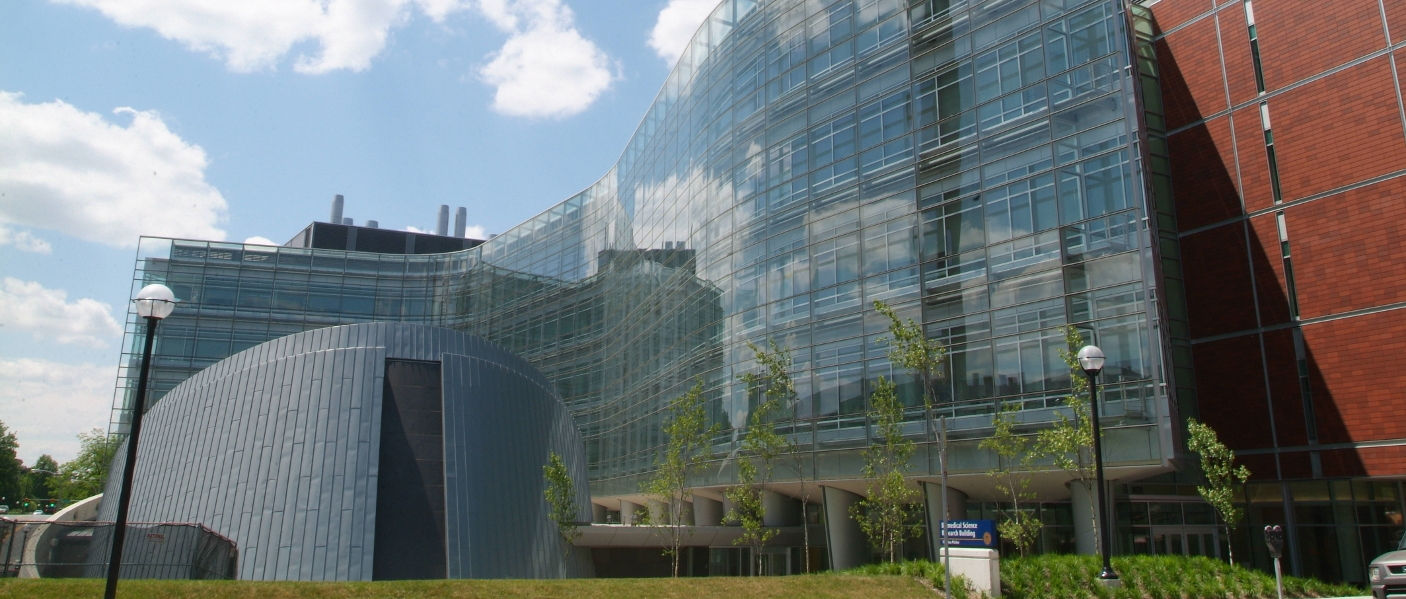

The research interests of the Rual lab lie in the field of cancer systems biology and the use of proteomic approaches to study molecular networks. We focus on the systematic analysis of protein interactions in biological systems and their relationship to human disease.
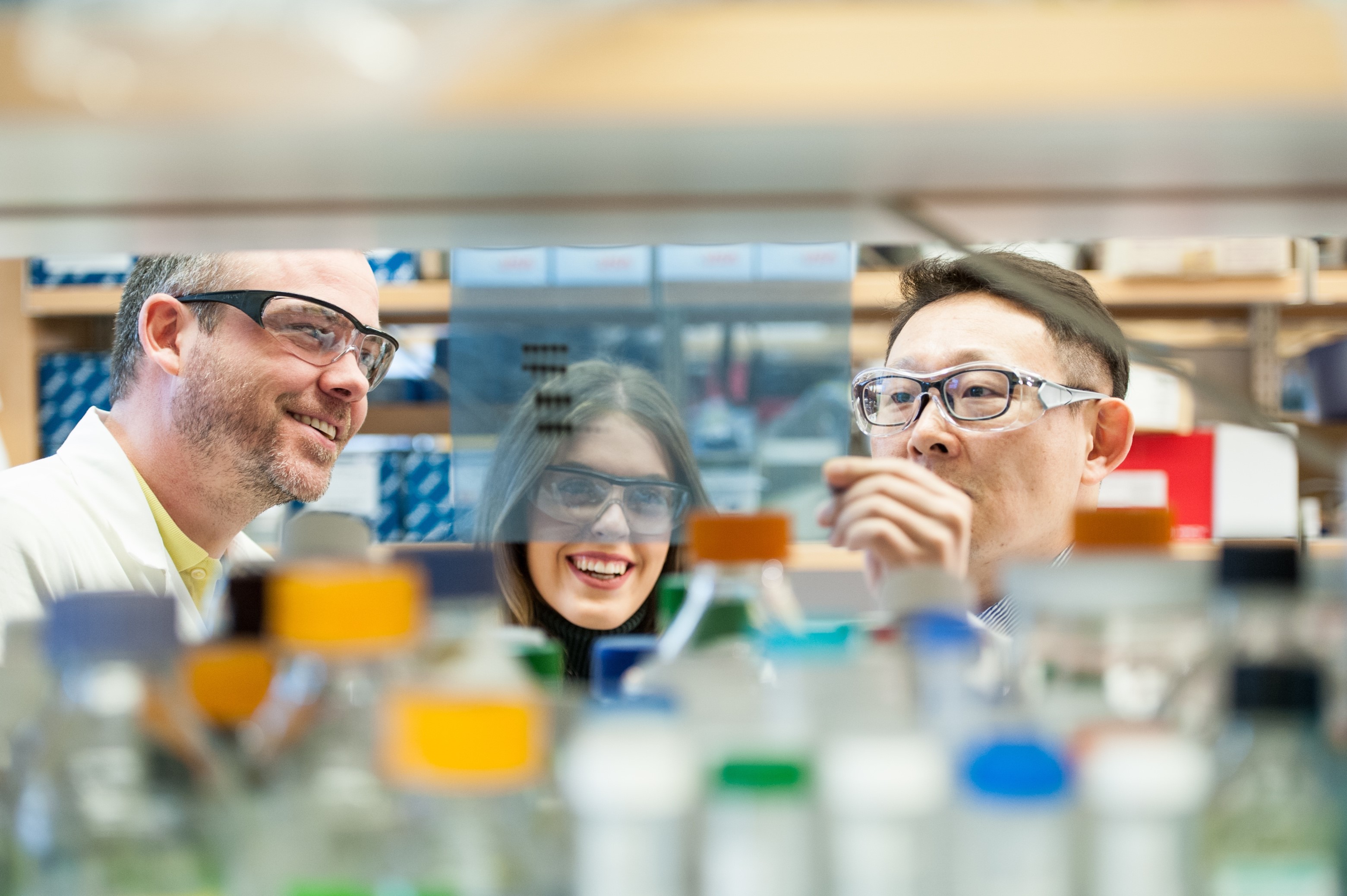
How does the ensemble of protein interactions govern biological processes in the cell and how can disruptions of these interactions lead to pathophysiological events such as the ones observed in brain tumorigenesis? Notch and Hedgehog define fundamental cell signaling mechanisms controlling metazoan development. Disruption of these mechanisms are contributing factors in brain tumorigenesis, e.g. medulloblastoma, the most common type of malignant brain tumor among children. Given the complexity and context-dependence of both Notch and Hedgehog signal modulations, a systematic molecular characterization of Notch- and Hedgehog-related proteins in brain cells should shed light on the complex molecular mechanisms that govern these pathways during brain tumorigenesis. The Rual lab is generating maps of the Notch and Hedgehog molecular networks in brain cells. This “interactome” approach has allowed us to uncover modulators of Notch or Hedgehog signals, e.g. L3MBTL3 and PIN1, respectively. Upon validation of these candidates in cell-based and in vivo models of medulloblastoma tumorigenesis, our project should offer the means to manipulating the Notch and Hedgehog molecular networks for therapeutic benefit.
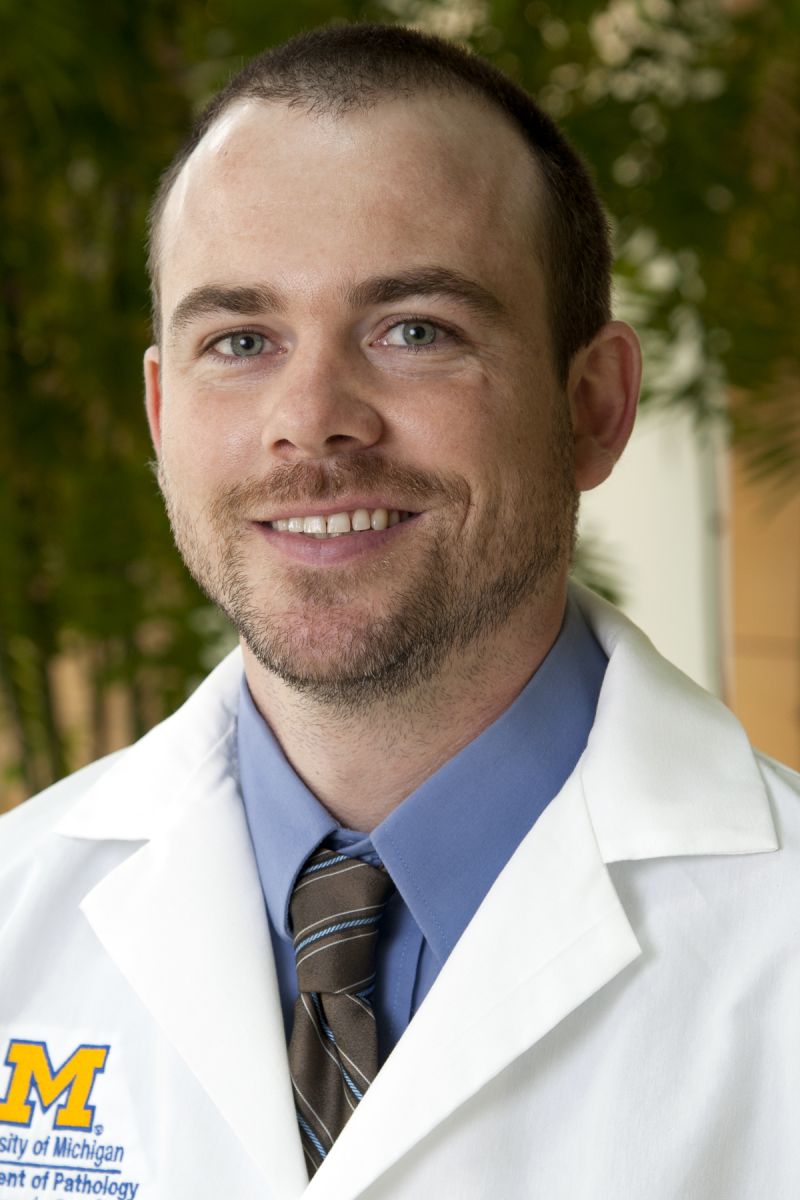
Associate Professor
Email: jrual@umich.edu
Phone: 734-764-6975
Dr. Jean-Francois (Jeff) Rual received a B.S. in Biochemistry and Molecular Biology from the University of Nice Sophia-Antipolis (Nice, France) in 1999 and a M.S. in Microbiology and Virology from the Pasteur Institute (Paris, France) and the University of Nice Sophia-Antipolis in 2000. He then went on to receive a M.S. in Bioinformatics from the University of Notre Dame de la Paix (Namur, Belgium) in 2001. He completed his graduate research studies in the Department of Genetics at Harvard Medical School (Boston, MA) in the laboratory of Prof. Marc Vidal and received his Ph.D. from the University of Notre Dame de la Paix in Molecular Biology in 2005. After two years as Project Leader at the Center for Cancer Systems Biology (CCSB) at Harvard Medical School under the direction of Prof. Marc Vidal (2005-2007), Dr. Rual joined the laboratory of Prof. Spyros Artavanis-Tsakonas in the Department of Cell Biology at Harvard Medical School (2007-2011). His post-doctoral training in the Artavanis-Tsakonas Lab was supported by a José Carreras International Leukemia Foundation Fellowship Award. In July 2011, Dr. Rual joined the faculty of the Department of Pathology at the University of Michigan as an Assistant Professor and is an American Society of Hematology (ASH) Scholar (2013-2015). Dr. Rual was promoted Associate Professor in the Department of Pathology at the University of Michigan in 2020 and was named Co-Director of the Molecular and Cellular Pathology (MCP) Graduate Program in 2023.

Caryn Crane
Administrative Assistant
Email: ccaryn@med.umich.edu
Phone: 734-764-6683
Fax: 734-763-8764
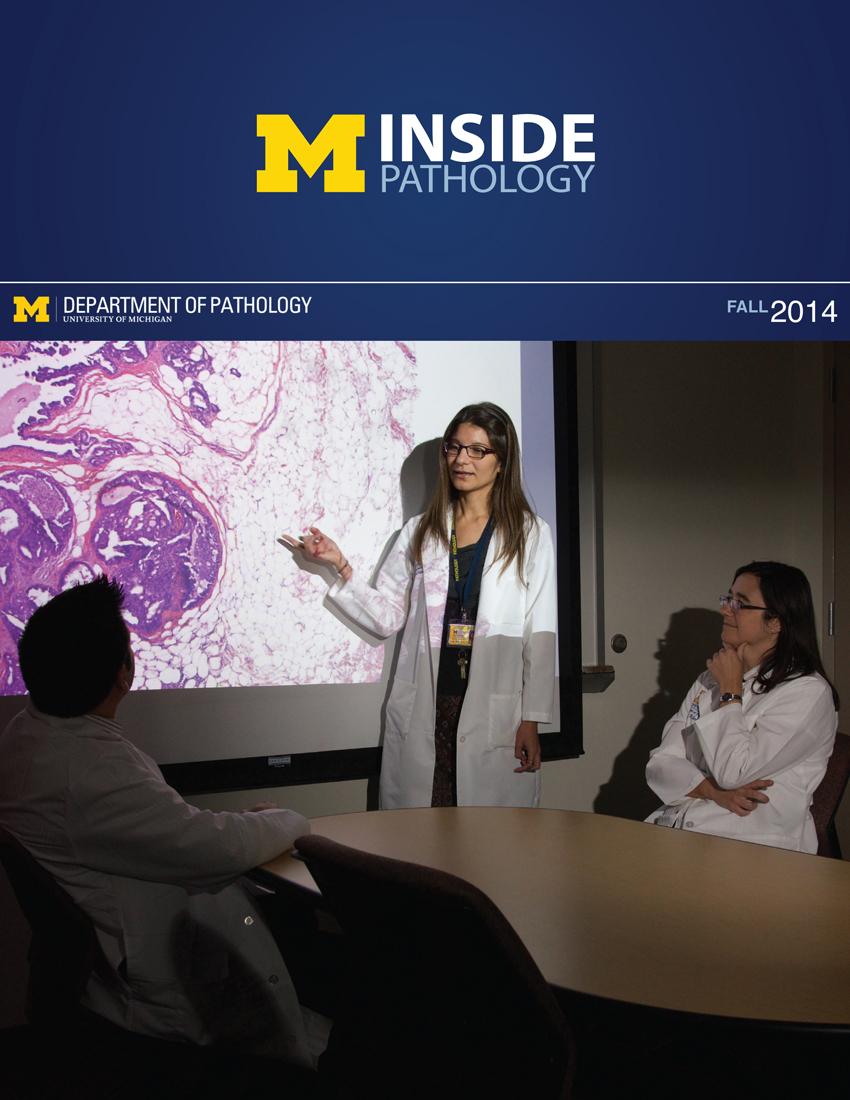 ON THE COVER
ON THE COVER
Breast team reviewing a patient's slide. (From left to right) Ghassan Allo, Fellow; Laura Walters, Clinical Lecturer; Celina Kleer, Professor. See Article 2014Department Chair |

newsletter
INSIDE PATHOLOGYAbout Our NewsletterInside Pathology is an newsletter published by the Chairman's Office to bring news and updates from inside the department's research and to become familiar with those leading it. It is our hope that those who read it will enjoy hearing about those new and familiar, and perhaps help in furthering our research. CONTENTS
|
 ON THE COVER
ON THE COVER
Autopsy Technician draws blood while working in the Wayne County morgue. See Article 2016Department Chair |

newsletter
INSIDE PATHOLOGYAbout Our NewsletterInside Pathology is an newsletter published by the Chairman's Office to bring news and updates from inside the department's research and to become familiar with those leading it. It is our hope that those who read it will enjoy hearing about those new and familiar, and perhaps help in furthering our research. CONTENTS
|
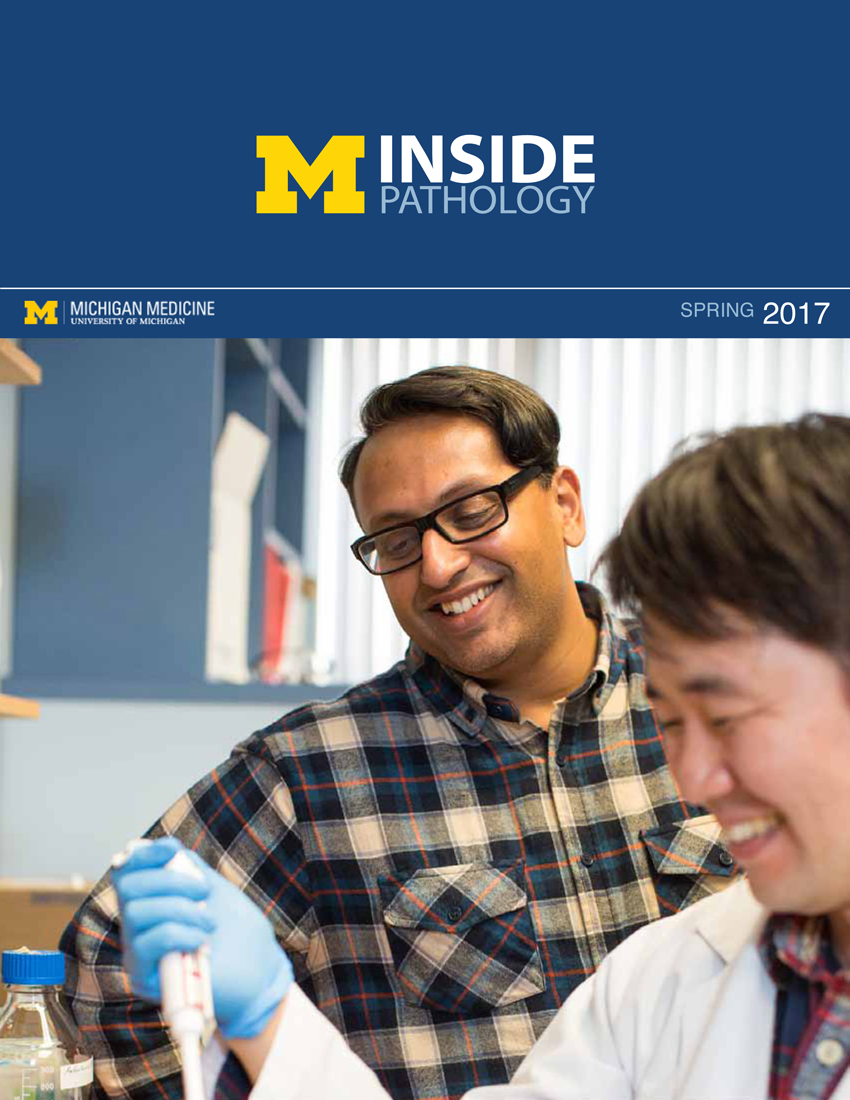 ON THE COVER
ON THE COVER
Dr. Sriram Venneti, MD, PhD and Postdoctoral Fellow, Chan Chung, PhD investigate pediatric brain cancer. See Article 2017Department Chair |

newsletter
INSIDE PATHOLOGYAbout Our NewsletterInside Pathology is an newsletter published by the Chairman's Office to bring news and updates from inside the department's research and to become familiar with those leading it. It is our hope that those who read it will enjoy hearing about those new and familiar, and perhaps help in furthering our research. CONTENTS
|
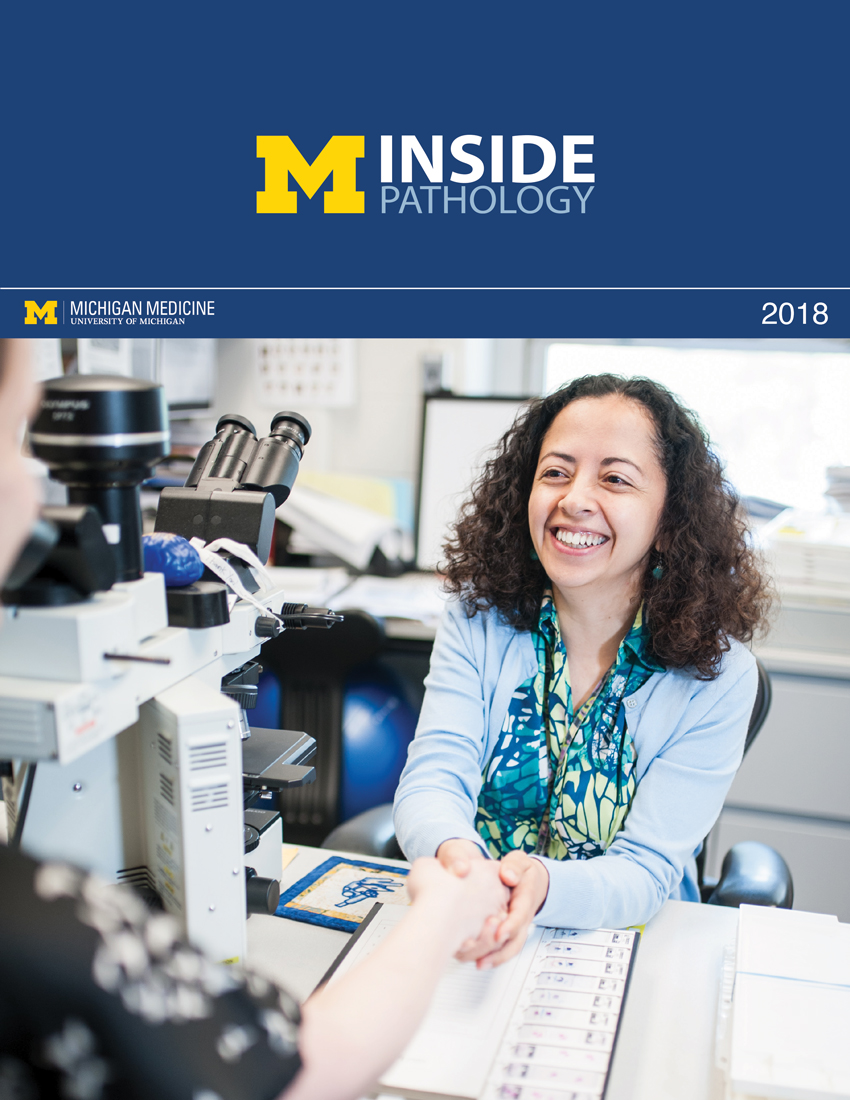 ON THE COVER
ON THE COVER
Director of the Neuropathology Fellowship, Dr. Sandra Camelo-Piragua serves on the Patient and Family Advisory Council. 2018Department Chair |

newsletter
INSIDE PATHOLOGYAbout Our NewsletterInside Pathology is an newsletter published by the Chairman's Office to bring news and updates from inside the department's research and to become familiar with those leading it. It is our hope that those who read it will enjoy hearing about those new and familiar, and perhaps help in furthering our research. CONTENTS
|
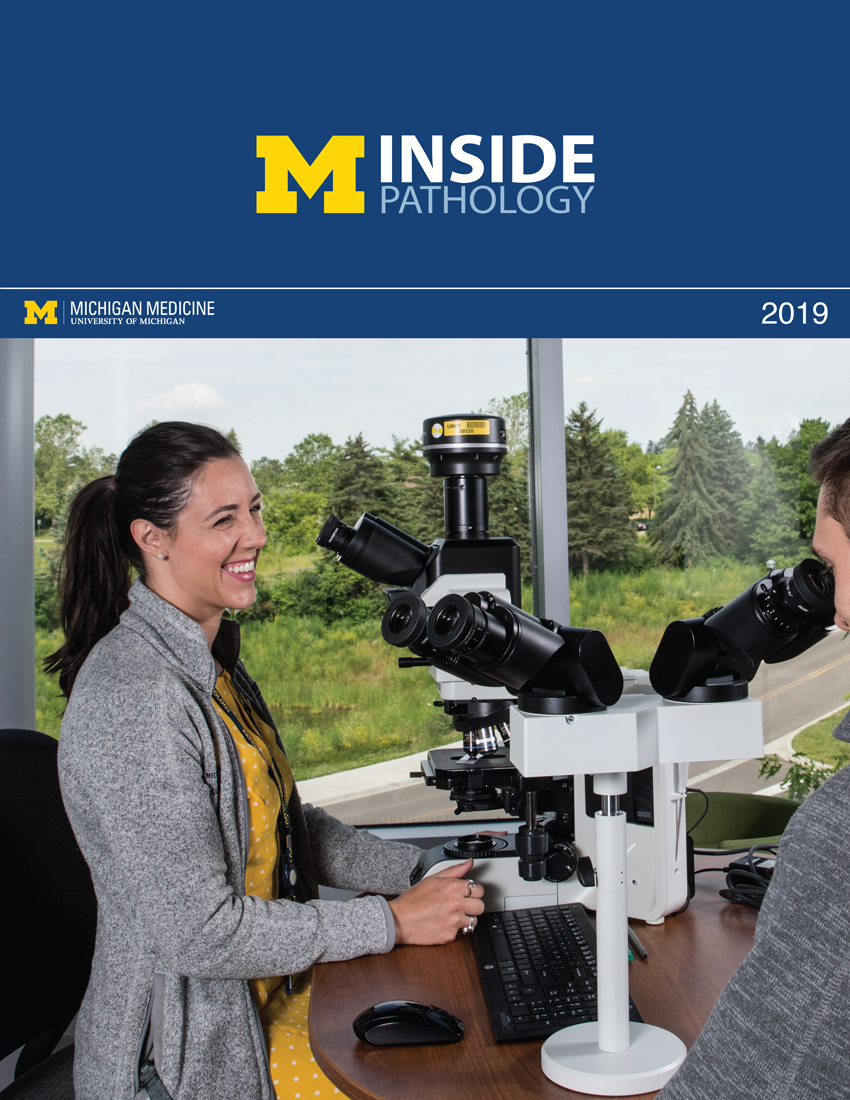 ON THE COVER
ON THE COVER
Residents Ashley Bradt (left) and William Perry work at a multi-headed scope in our new facility. 2019Department Chair |

newsletter
INSIDE PATHOLOGYAbout Our NewsletterInside Pathology is an newsletter published by the Chairman's Office to bring news and updates from inside the department's research and to become familiar with those leading it. It is our hope that those who read it will enjoy hearing about those new and familiar, and perhaps help in furthering our research. CONTENTS
|
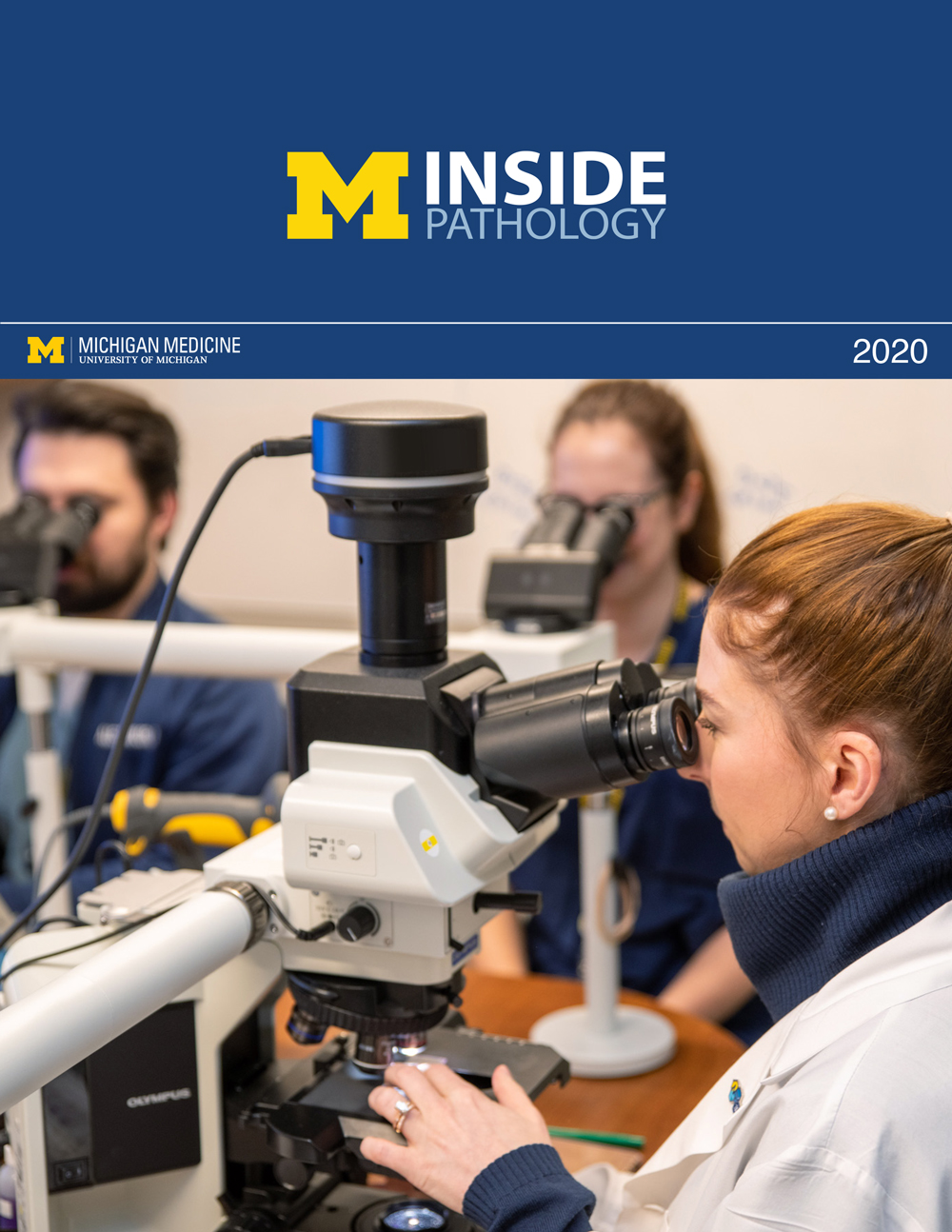 ON THE COVER
ON THE COVER
Dr. Kristine Konopka (right) instructing residents while using a multi-headed microscope. 2020Department Chair |

newsletter
INSIDE PATHOLOGYAbout Our NewsletterInside Pathology is an newsletter published by the Chairman's Office to bring news and updates from inside the department's research and to become familiar with those leading it. It is our hope that those who read it will enjoy hearing about those new and familiar, and perhaps help in furthering our research. CONTENTS
|
 ON THE COVER
ON THE COVER
Patient specimens poised for COVID-19 PCR testing. 2021Department Chair |

newsletter
INSIDE PATHOLOGYAbout Our NewsletterInside Pathology is an newsletter published by the Chairman's Office to bring news and updates from inside the department's research and to become familiar with those leading it. It is our hope that those who read it will enjoy hearing about those new and familiar, and perhaps help in furthering our research. CONTENTS
|
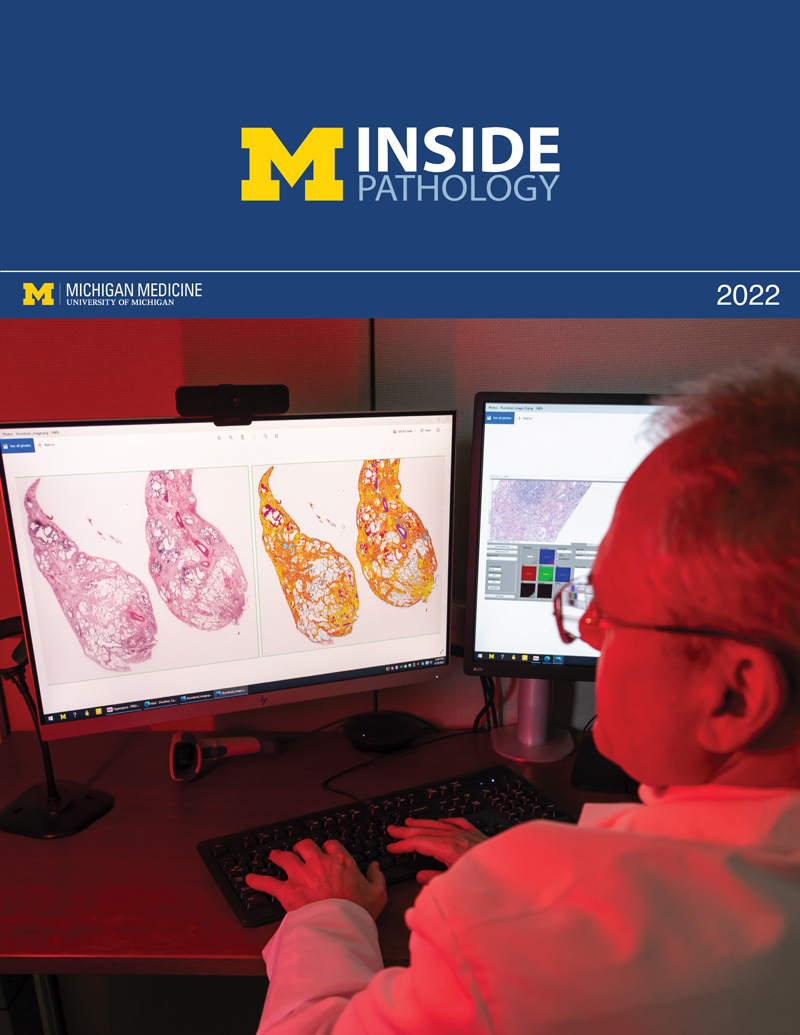 ON THE COVER
ON THE COVER
Dr. Pantanowitz demonstrates using machine learning in analyzing slides. 2022Department Chair |

newsletter
INSIDE PATHOLOGYAbout Our NewsletterInside Pathology is an newsletter published by the Chairman's Office to bring news and updates from inside the department's research and to become familiar with those leading it. It is our hope that those who read it will enjoy hearing about those new and familiar, and perhaps help in furthering our research. CONTENTS
|
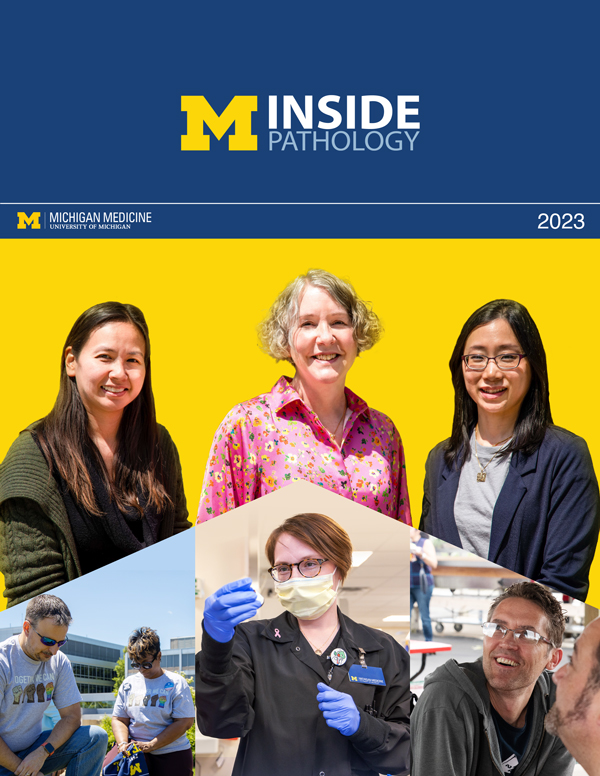 ON THE COVER
ON THE COVER
(Left to Right) Drs. Angela Wu, Laura Lamps, and Maria Westerhoff. 2023Department Chair |

newsletter
INSIDE PATHOLOGYAbout Our NewsletterInside Pathology is an newsletter published by the Chairman's Office to bring news and updates from inside the department's research and to become familiar with those leading it. It is our hope that those who read it will enjoy hearing about those new and familiar, and perhaps help in furthering our research. CONTENTS
|
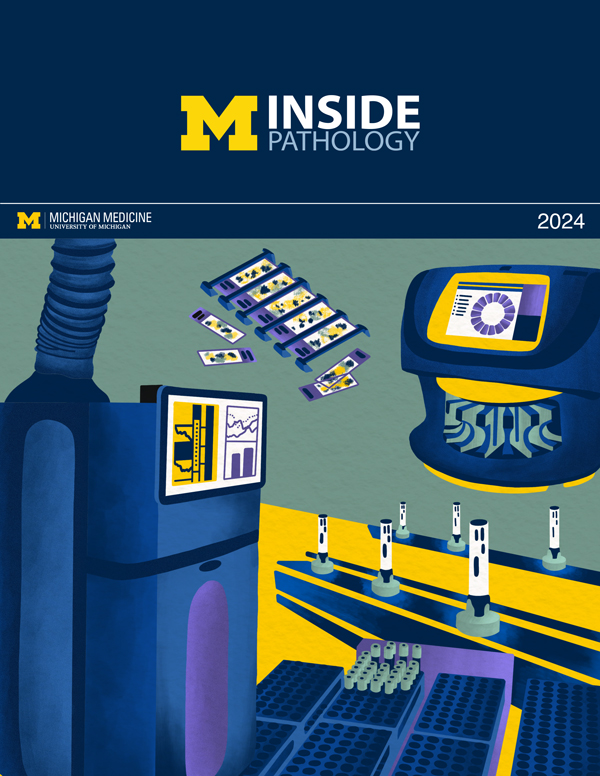 ON THE COVER
ON THE COVER
Illustration representing the various machines and processing used within our labs. 2024Department Chair |

newsletter
INSIDE PATHOLOGYAbout Our NewsletterInside Pathology is an newsletter published by the Chairman's Office to bring news and updates from inside the department's research and to become familiar with those leading it. It is our hope that those who read it will enjoy hearing about those new and familiar, and perhaps help in furthering our research. CONTENTS
|
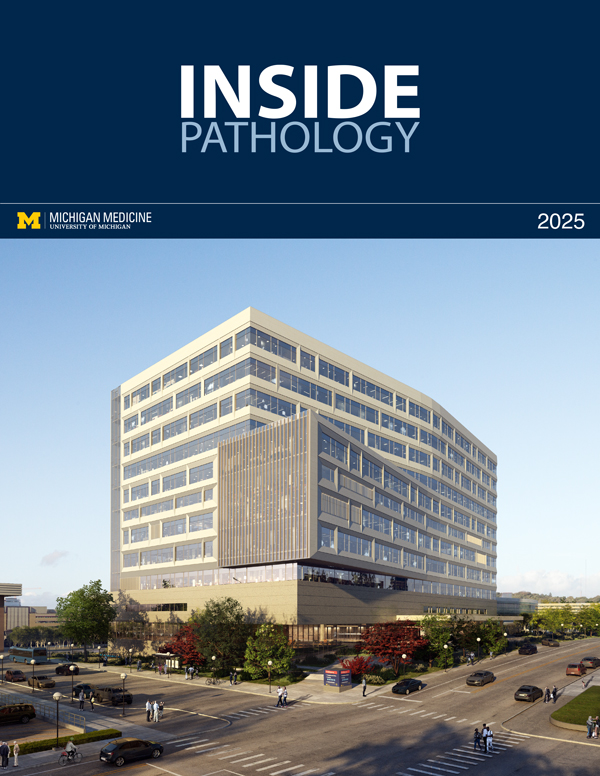 ON THE COVER
ON THE COVER
Rendering of the D. Dan and Betty Khn Health Care Pavilion. Credit: HOK 2025Department Chair |

newsletter
INSIDE PATHOLOGYAbout Our NewsletterInside Pathology is an newsletter published by the Chairman's Office to bring news and updates from inside the department's research and to become familiar with those leading it. It is our hope that those who read it will enjoy hearing about those new and familiar, and perhaps help in furthering our research. CONTENTS
|

MLabs, established in 1985, functions as a portal to provide pathologists, hospitals. and other reference laboratories access to the faculty, staff and laboratories of the University of Michigan Health System’s Department of Pathology. MLabs is a recognized leader for advanced molecular diagnostic testing, helpful consultants and exceptional customer service.